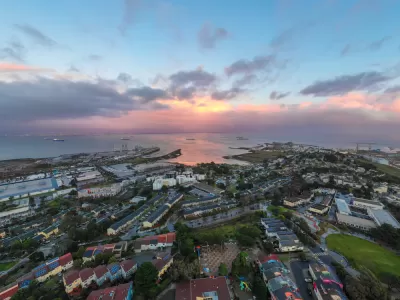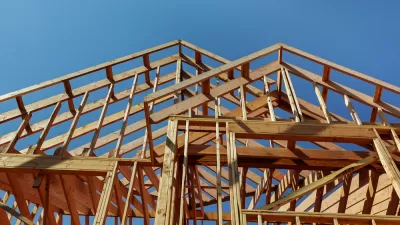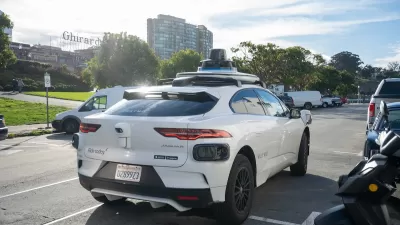Residents of the Bayview neighborhood say they support new housing, but object to a proposed building that would replace one of the area’s only green spaces.

Tensions over a proposed housing development in the Bayview neighborhood of San Francisco highlights the Bay Area’s conflicting housing and conservation priorities, writes Jessica Wolfrom in the San Francisco Examiner.
With an outsized homeless crisis and dire housing shortage, The City must rapidly increase its affordable housing stock. But as a place that prides itself on its green values and ambitious climate goals, protecting and enhancing the last remaining open spaces is critical for storing carbon, fostering biodiversity and improving the health outcomes of its residents.
An application for a five-story residential building on a now-vacant hillside, which will likely be approved through the state’s SB9 bill, is meeting with resistance from local residents, who say the project would destroy local green space and contribute no affordable housing. Losing one of the only green spaces within miles could contribute to pollution and worsened public health in a neighborhood already plagued by higher air pollution rates than other parts of the city. “Because of its industrial setting, Bayview’s residents can, on average, expect to live 14 years less than their counterparts in Russian Hill, according to The City’s health department, and residents suffer from chronic diseases, including diabetes, asthma and heart failure, at much higher rates than the rest of San Francisco.”
FULL STORY: Bayview residents want more housing. Just not on this hillside

Study: Maui’s Plan to Convert Vacation Rentals to Long-Term Housing Could Cause Nearly $1 Billion Economic Loss
The plan would reduce visitor accommodation by 25,% resulting in 1,900 jobs lost.

Alabama: Trump Terminates Settlements for Black Communities Harmed By Raw Sewage
Trump deemed the landmark civil rights agreement “illegal DEI and environmental justice policy.”

Why Should We Subsidize Public Transportation?
Many public transit agencies face financial stress due to rising costs, declining fare revenue, and declining subsidies. Transit advocates must provide a strong business case for increasing public transit funding.

Paris Bike Boom Leads to Steep Drop in Air Pollution
The French city’s air quality has improved dramatically in the past 20 years, coinciding with a growth in cycling.

Why Housing Costs More to Build in California Than in Texas
Hard costs like labor and materials combined with ‘soft’ costs such as permitting make building in the San Francisco Bay Area almost three times as costly as in Texas cities.

San Diego County Sees a Rise in Urban Coyotes
San Diego County experiences a rise in urban coyotes, as sightings become prevalent throughout its urban neighbourhoods and surrounding areas.
Urban Design for Planners 1: Software Tools
This six-course series explores essential urban design concepts using open source software and equips planners with the tools they need to participate fully in the urban design process.
Planning for Universal Design
Learn the tools for implementing Universal Design in planning regulations.
Smith Gee Studio
Alamo Area Metropolitan Planning Organization
City of Santa Clarita
Institute for Housing and Urban Development Studies (IHS)
City of Grandview
Harvard GSD Executive Education
Toledo-Lucas County Plan Commissions
Salt Lake City
NYU Wagner Graduate School of Public Service





























